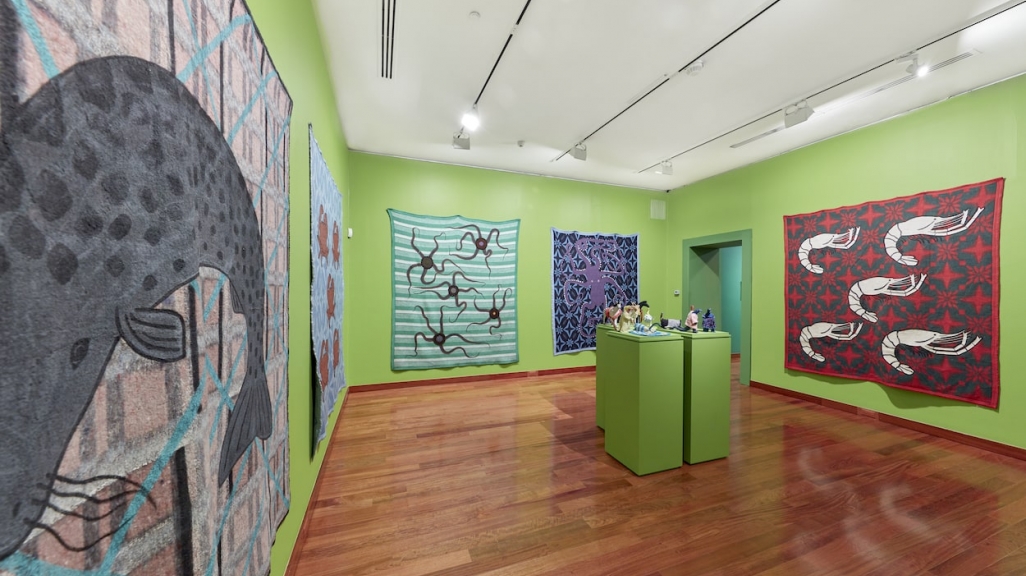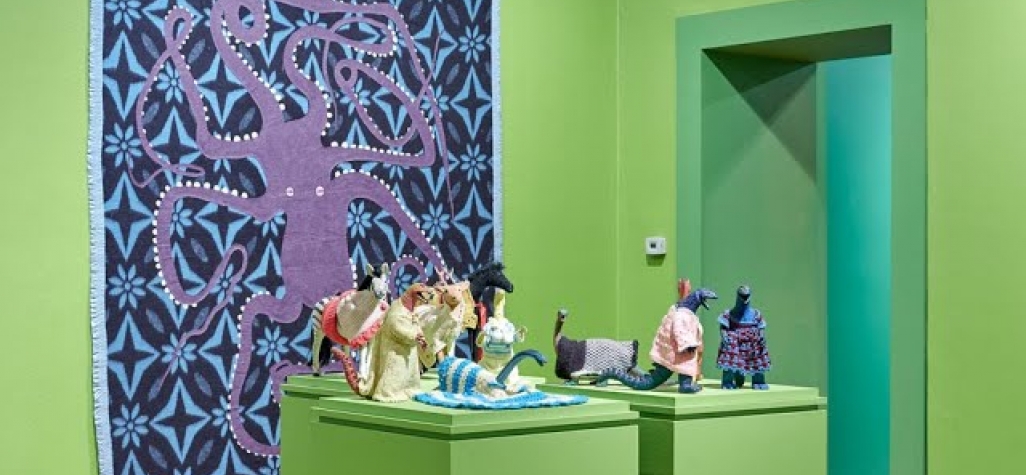Feliciano Centurión: Abrigo
On view:
through
Feliciano Centurión: Abrigo
Americas Society is pleased to invite you to the first solo exhibition of Paraguayan artist Feliciano Centurión in the United States, curated by Gabriel Pérez-Barreiro. Centurión created textile works engaging with folk art and queer aesthetics in 1990s South America. Through the embroidery and painting of vernacular objects such as blankets and aprons, Centurión rendered poetic readings of his youth in the tropics, his love experiences in the metropolis, and his spiritual reflections before his untimely death due to AIDS-related illness.
Make a booking to visit the gallery with our new safety guidelines.
Take a look at individual artworks in the installation:
Agencia Télam destaca la exposición de Americas Society, "Abrigo"
Hyperallergic calls the Visual Arts exhibition, Feliciano Centurión: Abrigo, "a celebration of life."
"In Centurión’s first exhibition in the U.S.,...queer aesthetics mingle with folk traditions of South America to poignant, sometimes dramatic effect," writes Johanna Fateman for Goings on About Town.
ABC Color destaca Feliciano Centurión: Abrigo, la nueva exposición de Americas Society.
The Paraguayan artist's first U.S. solo exhibition, displaying textile works engaging folk and queer aesthetics, opened February 14, 2020.
The presentation of Feliciano Centurión: Abrigo is made possible by the generous support of waldengallery, Galeria Millan, and Cecilia Brunson Projects. The exhibition is supported, in part, by public funds from the New York City Department of Cultural Affairs in partnership with the City Council. Additional support is provided by Sharon Schultz.
Americas Society acknowledges the generous support from the Arts of the Americas Circle members: Estrellita B. Brodsky; Virginia Cowles Schroth; Diana Fane; Galeria Almeida e Dale; Isabella Hutchinson; Carolina Jannicelli; Luis Oganes; Vivian Pfeiffer and Jeanette van Campenhout, Phillips; Gabriela Pérez Rocchietti; Erica Roberts; Sharon Schultz; Diana López and Herman Sifontes; and Edward J. Sullivan.






















